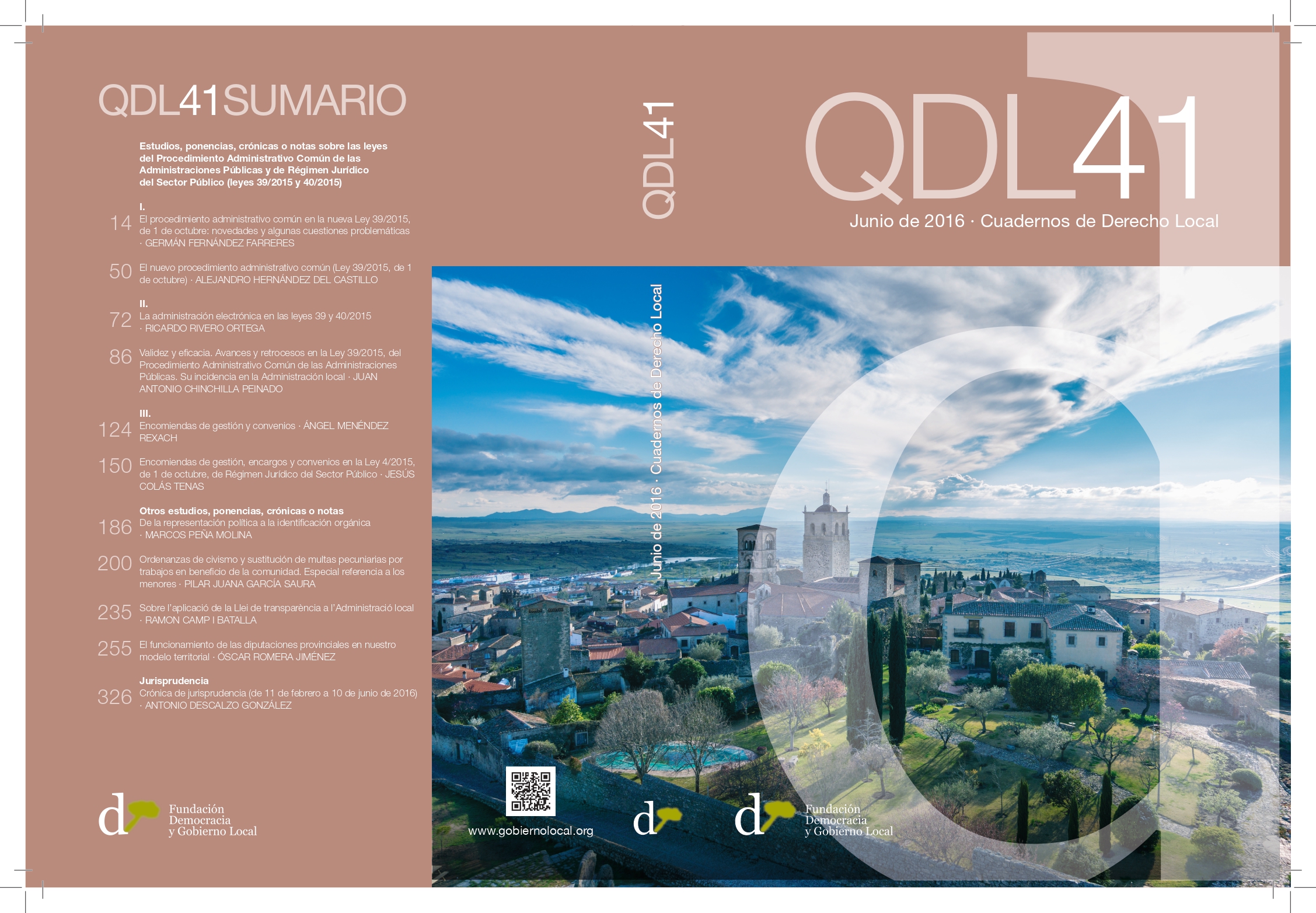The new administrative procedure (Law 39/2015, of 1 October)
Main Article Content
Law 30/1992, of 26 November, signified a milestone in the field of administrative procedural law. Despite the fact that this law introduced several measures for speeding up the administrative process, rapidly became inoperative, being an example the mechanism of the prior communication established by article 110.3 and suppressed by Law 4/1999, of 13 January. Law 39/2015, of 1 October, also pursues the goal of speeding up the administrative procedure (in fact, we can sustain that in Spain delays in administrative and judicial procedures are flaws in the system: late solutions are not really solutions). In this context, Law 39/2015 introduces new measures which, in most of the cases, are the result of the procedural experience and the knowledge of courts. Moreover, some of these measures provide answers to citizens’ requests, for instance, one of these measures qualifies Saturdays as a public holiday, and therefore, it does not count for procedural administrative deadlines. It is praiseworthy the generalization –and obligation to use– of electronic means or the simplification of the administrative procedure. However, in the case of bolstering the electronic administration, Law 39/2015 has taken a controversial decision from the point of view of the rule of law: the public administration determines the private individuals which are obligated to use electronic means, taking into account criteria such as the economic, technical or professional capacity. In addition, in these days in which transparency is a relevant trend, it is far more questionable that internal reports or between administrative bodies or entities are not part of the administrative file. It is precisely transparency which dignifies administrative action and consolidates the confidence of citizens in the public administration.

